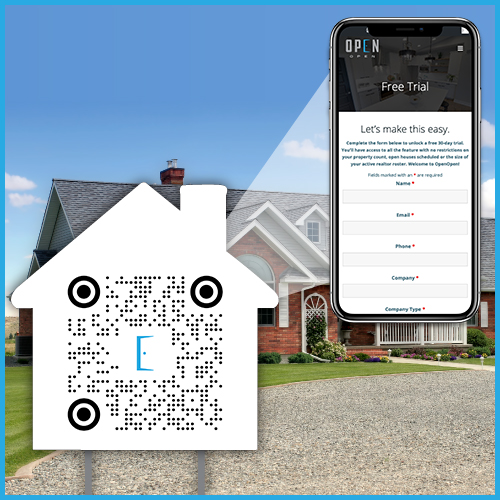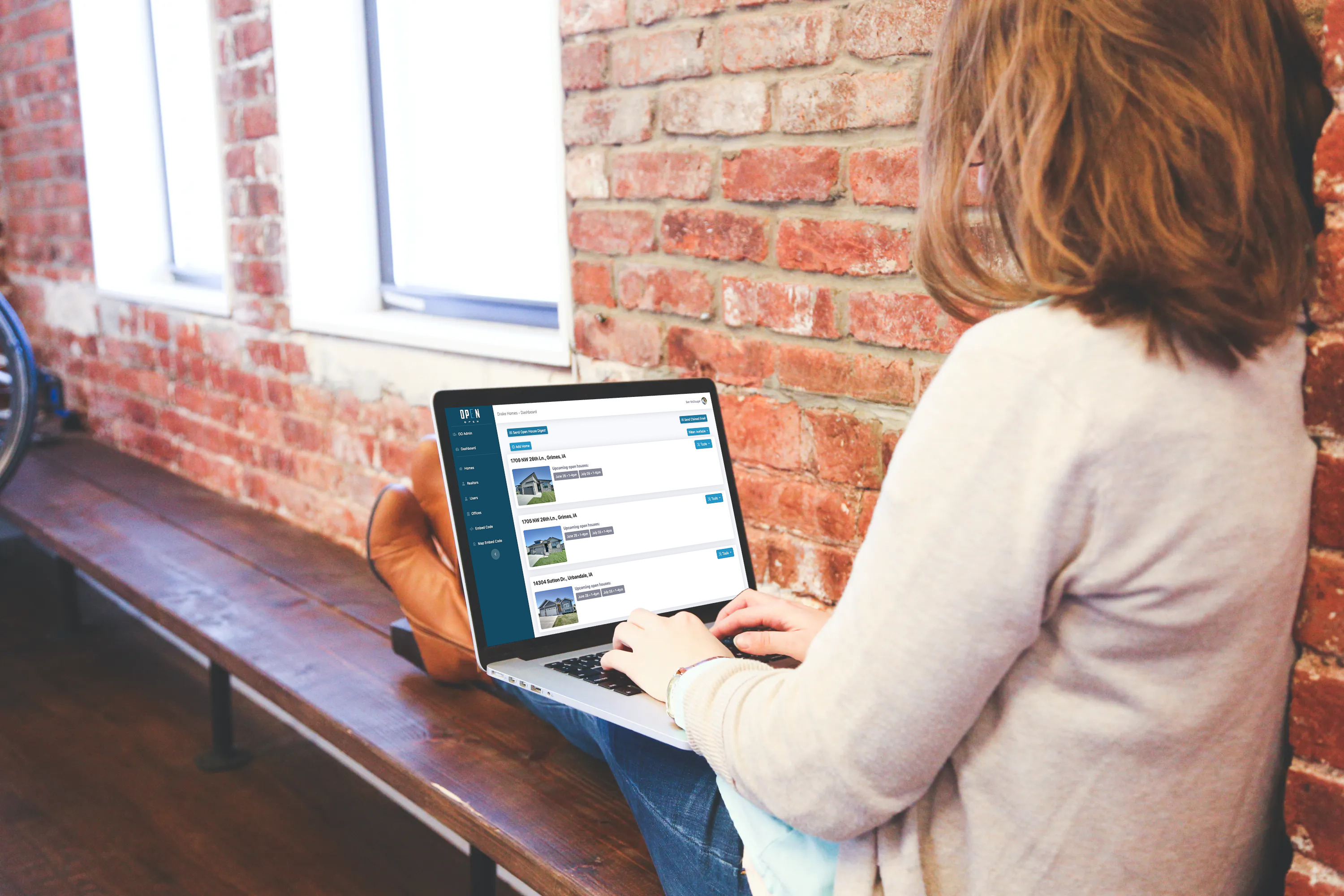Nothing compares to the live interactions that happen during an open house. If you’re unable to be on-site, there may still be value in hosting a virtual open house experience. Here are a few interactive ways to give home buyers a chance to virtually visit a home for sale.
1. 3D Tours
The easiest way to go beyond the details of a property listing is to create an 3D tour. Property details, photos and videos are important, but 3D tours give people a chance to more interactively explore the floor plan. Virtual visitors are able to click around to various spots throughout the property and see how the home looks from any angle, so be sure the entire home looks sharp. There are free mobile apps that allow you to use just your smartphone to create 3D tours, but we suggest using a 360 camera to capture a more immersive experience with full resolution images. If you’re working with new construction, interactive 3D renderings are also a neat way of highlighting what’s to come. With technology always changing, please contact us for our latest equipment and software recommendations.
2. Live Video
Video communication tools allow real estate agents to connect with home buyers wherever they are. Video chats are great for out of town buyers or anyone who may not be able to physically visit a traditional open house. Agents can be on-site to show their clients around the home and respond to their immediate reactions. This is easy for one-on-one interactions, but the same concept can be expanded to create a larger group experience. To interact with more prospective buyers, think of this more like a webinar. Set the date/time, promote the event and invite people to attend like you would for a traditional open house. Instead of having people stop by to visit the home in person, deliver a link for them to virtually tune-in to the video call. For the event, be at the home and give participants a brief tour before offering to answer questions or showing specific features around the house. There’s plenty to talk about related to the home itself, but to keep the energy of a live video vibrant, have some fun facts, local trivia or other types of interesting materials to fill dead air time. Live videos can be fun and great way to get people talking, but consider testing the overall experience to reduce the chance of technical difficulties. If possible, visit the home beforehand. Arrive around the same time your event is planned for and while on-site, launch the video conferencing platform on your laptop and/or mobile device. Use the link you’ve promoted to bring a few colleagues into the call and see how everything feels. Do the settings of your video conferencing software feel on point for everyone? Is the connection solid? How’s the lighting in different areas of the home? Can everyone hear you? Are you able to hear everyone else? Do you need earphones? If there’s a chat tool, are you able to use that while still keeping everyone engaged? What happens if the video call drops? Treat this dry run like it was the real thing. Try to shoot holes in your plan before it matters to avoid unplanned distractions when you have clients on the call. Like equipment and software for 3D tours, please contact us for more details or specific recommendations.
3. Brokerage Showcase
Expand awareness and allow buyers to visit more homes by collaborating with multiple agents inside your brokerage. This is similar to hosting a live video with home buyers, just with more agents and homes being showcased at once. It takes a bit of coordination, but this type of showcase is not hard to execute. Simply find an energized, tech-savvy host to moderate the experience. Their role is like a news anchor or podcast host. They welcome viewers, explain the process, add interesting commentary, interview agents and make technical transitions to each home smooth. Realtors in multiple locations all call in and once everyone is on the line, you’re ready to welcome viewers before introducing each agent who will tour the home they’re in. This can be done live or recorded and posted after a bit of editing. Along with a fun video that will have more people sharing, it’s also wise to support the video with an easy way to learn more about the homes that were showcased so they can connect with agents to learn more.
 4. Smart Signs
4. Smart Signs
Create yard signs with instructions on how people can learn more about the home. QR codes (which can now be scanned without a separate app, simply by hovering over it with a smartphone’s camera), shortened links or the search term to find an app are all easy ways for people to access the content you’re wanting them to find. When activating this extra layer, be sure to include brief instructions so anyone knows how to access what you’re providing. This may be a link to the listing, a 3D tour, a contact form, live chat or even the ability to safely enter the home using smart home technologies.
5. Social Media Livestreams
Showcasing a home with a livestream on social media can be a good way to attract fresh attention to your brand and the property for sale. The production of these videos is similar to hosting a live video, so it’s once again important to understand the equipment you’ll be using and the type of experience viewers will receive. Smartphones deliver acceptable quality, but there are ways of improving the quality of your video with wireless lapel microphones for improved sound, stabilizing gimbals, tripods and different types of cameras. Some 360 cameras can also livestream, so don’t be afraid to explore ways of enhancing the overall viewing experience. No matter the setup, know this may not be as interactive, so plan how you’ll tour the home. Be concise and make smooth movements, but don’t be afraid to talk less and slow down so viewers can enjoy more details without distraction. Think about what a view can’t experience virtually and deliver insight on those aspects as you present the home. As you optimize your presentation, work to understand the social media landscape and choose a few different places to post your livestreams. Assuming you’re not a famous social media influencer, recognize that concurrent viewers and real-time reactions may be low during a livestream, but the content can still generate engagement after the live experience is over. Keep an eye out for comments and if the video turns out sharp, boost the impact by sharing it with prospects who may be interested in the home you showcased. Learn when, where and how your efforts make the best impact and snowball engagement by hosting more virtual open houses more often.
6. Increased Accessibility
Even with traditional open houses scheduled, consider how virtual open houses might add a fresh way for you to connect with new clients. Perhaps you host your live open houses on Sunday afternoons, but also host a monthly virtual experience during the week! Once you have a solid way to implement a virtual open house experience, conducting them more often only requires a marketing effort to drive engagement. The challenge of getting people to care should never be overlooked, but when you have both styles in play, you can use each one to promote the other. At your live open house, invite visitors to stop by the virtual experience and when you’re hosting a virtual open house, complete the circle by inviting online visitors to stop by the house to seal more deals.

